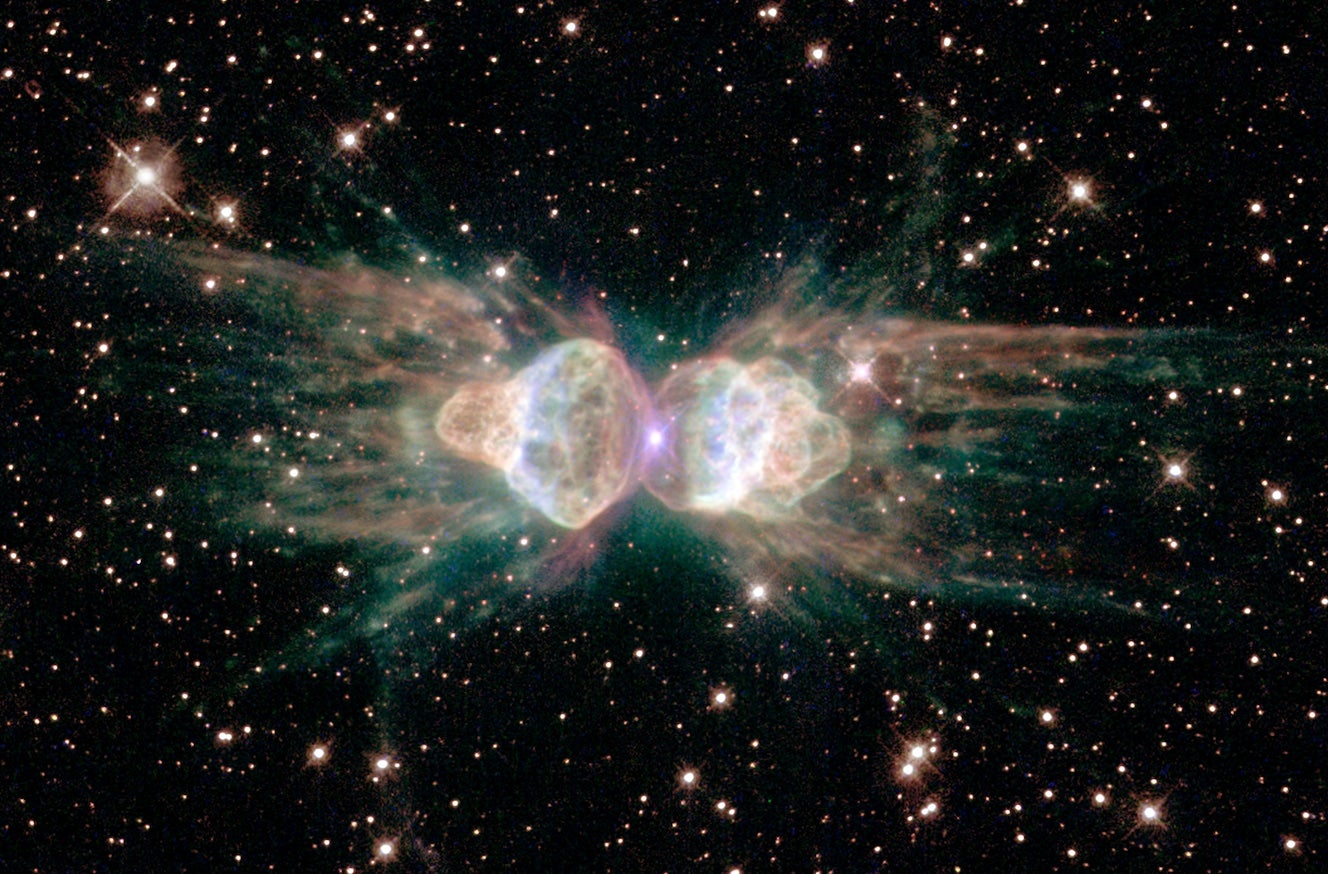
Menzel 3, also called the Ant Nebula, lies about 3,000 light-years away in the southern constellation Norma. At magnitude 13.8 and about 1′ across its longest dimension, it is a faint target for observers. Like many obscure objects, this one reveals some amazing detail only with large telescopes. The name comes from the way its shape resembles a garden ant, with a clearly defined head and thorax. Shapes like this are associated with bipolar planetary nebulae.
In addition to the core where the formative star is located, there are four distinct outflow structures associated with this nebula. The two bulb-shaped lobes are punctuated by faster-moving gas on each side. There are also two hourglass-shaped filamentary columns and two cone-shaped rays that radiate in slightly different directions. One peculiar feature that distinguishes the Ant Nebula from similar objects is an equatorial ring, called a chakram, surrounding the central star. Its formation is thought to be related to the star’s evolution.
Two theories postulate how such a weird nebula might form. The central star might be a binary. To influence the nebula, its components must be very close, perhaps separated by as little as the Earth-Sun distance. At that proximity, the outside of the bloated red giant creating the nebula might extend beyond its companion — a star inside a star! As the smaller star orbits the larger one, its influence might create the odd nebular shape.
A second theory posits that the dying star is spinning and its strong magnetic field is creating the fantastic shapes. Moving at 620 miles per second (1,000 km/s), the gas follows the lines of the magnetic field as they escape into space; as the gas is lit by ultraviolet light from the star, it reveals the shape of the magnetic field.
No matter the cause, the result is beautiful.









